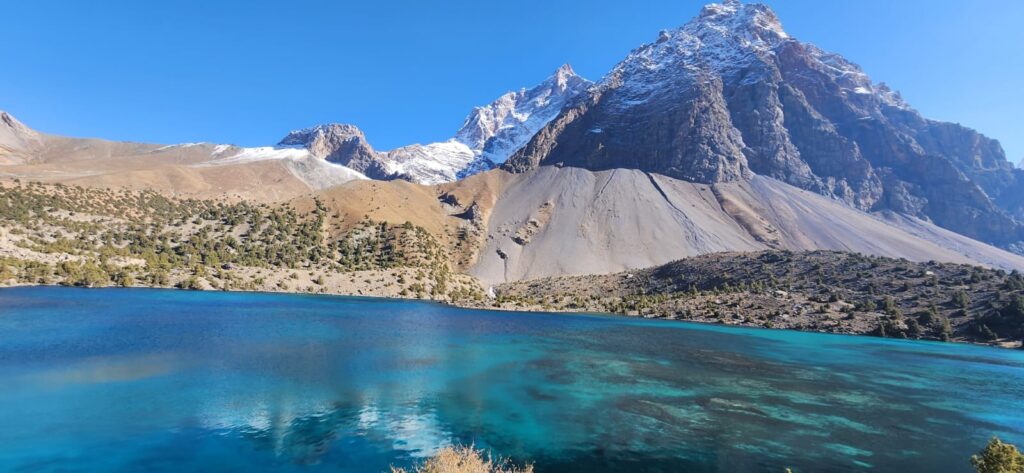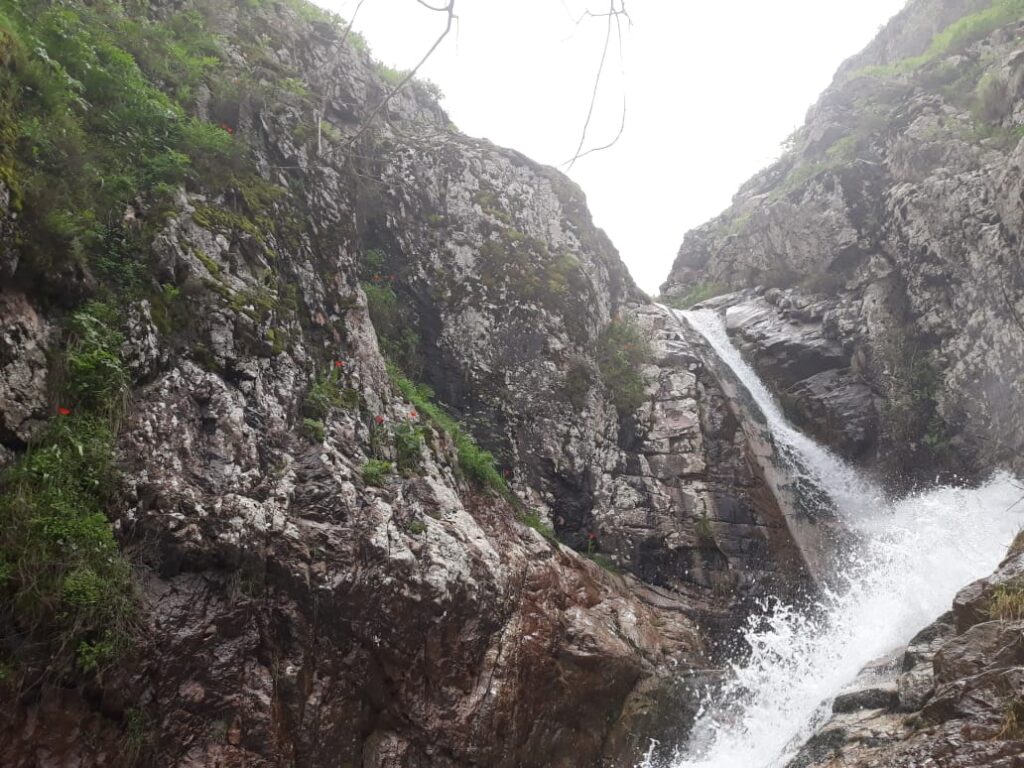At dawn in the Pamirs, the air is thin and sharp. Shadows stretch across scree slopes, and silence dominates, that is until a sudden whistle breaks it. A marmot calls from its burrow, alerting others to movement. On the ridge above, an ibex steps carefully, horns sweeping like crescents against the sky. In these high mountains, life is rare but resilient. Tajikistan’s fauna, much like its flora, is a story of adaptation to extremes, survival in fragile habitats, and coexistence with people who share the land.
Few animals capture imagination like the snow leopard. Known locally as barf kuchi, the snow wanderer, it roams remote valleys, seen only by herders and camera traps. Tajikistan’s mountains are among its last strongholds. Conservationists estimate fewer than 300 individuals survive here (WWF, 2015). Every sighting is an event. A ranger in Gorno-Badakhshan recalls: “We saw the tracks, then a shadow against the snow. It watched us for a moment, then vanished. You feel blessed when it happens.”
Other icons of the mountains include Marco Polo sheep, with horns curling in grand spirals, and brown bears that forage along alpine meadows. Each species carries both ecological and cultural weight: symbols of endurance in landscapes that appear barren but pulse with hidden life.
Beyond the emblematic animals are the creatures of daily encounter. Villagers in Rasht Valley watch golden eagles circle fields; children chase hares through scrubland. Rivers host trout and endemic fish, while wetlands along the Syr Darya attract migratory birds. The Red Book of Tajikistan lists more than 200 animal species as rare or endangered, from lynx to vultures (CEP, 2015).
Wildlife here is never separate from human life. Herders measure pasture health by the return of marmots. Hunters pass down stories of wolves stealing sheep. Children know where hedgehogs forage near gardens. Fauna is not abstract- it is part of the rhythms of survival and imagination, where animals shape stories, economies, and fears alike.
Fragile habitats face heavy pressures. Overhunting during the 1990s reduced populations of ibex and argali. Today, poaching persists, driven by demand for meat, hides, and trophies. Livestock herding competes with wild ungulates for scarce pastures. In forests, logging and fuelwood collection shrink habitats for bears and wild cats.
A 2014 UNEP report warns: “Unsustainable use of wildlife resources in Tajikistan threatens the survival of several flagship species” (UNEP, 2014). Enforcement exists but is inconsistent. Rangers are few, resources limited, and remote terrain vast. Communities often find themselves torn between protecting species and meeting immediate needs.
Despite challenges, new approaches are emerging. Community-based conservancies give villagers a stake in protecting wildlife by linking conservation to eco-tourism and sustainable hunting quotas. In Darvaz district, local associations monitor ibex and Marco Polo sheep, offering controlled trophy hunts that generate revenue for schools and clinics. NGOs note that wildlife numbers rebound when communities see tangible benefits.
International organizations support snow leopard protection, funding camera traps, ranger training, and livestock insurance schemes. These efforts recognize that coexistence is key: herders must be compensated when leopards take sheep, or resentment will undermine conservation.
Climate change adds another layer of fragility. Warming shifts habitats upward, forcing species into narrower bands. Alpine meadows shrink, wetlands dry, and migration routes alter. Birds that once rested in Tajikistan’s valleys may bypass them if food sources decline. The long-term risks are profound: biodiversity loss that erodes ecosystems already under stress.
For Tajikistan, this is not just an ecological concern but a cultural one. Animals are woven into folklore, identity, and national pride. To lose them would be to lose part of the country’s story.
One evening near Lake Karakul, a herder describes hearing wolves in winter. “They come close when the snow is deep. We do not hate them. They are part of this place. But we must protect our animals, too.” His words capture the balance between fear and respect. Wildlife here is not romanticized; it is lived with, sometimes painfully, sometimes with wonder.
Standing on a ridge at sunset, watching an eagle tilt against the wind, one understands that Tajikistan’s fauna is not only rare species in reports but a living presence. Fragile, yes, but enduring, as long as people and animals find ways to share the land.
References
- CEP. (2015). Red Book of the Republic of Tajikistan: Rare and Endangered Species of Animals. Dushanbe: Committee for Environmental Protection.
- UNEP. (2014). Biodiversity Assessment for Central Asia: Tajikistan Country Profile. Nairobi: United Nations Environment Programme.
- WWF. (2015). Snow Leopard Conservation in Tajikistan: Status Report. Gland: World Wide Fund for Nature.








